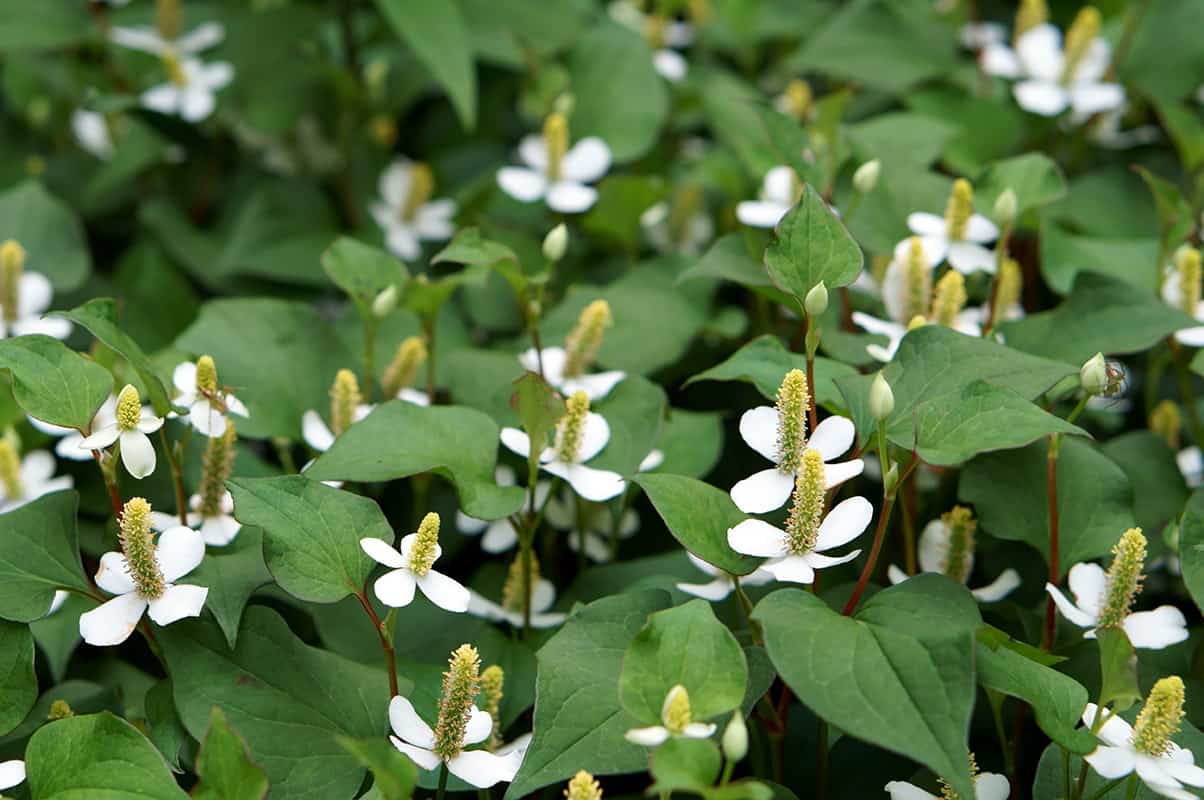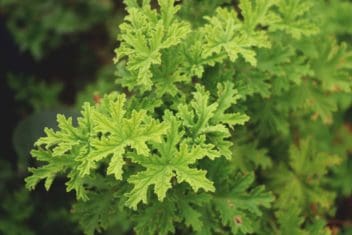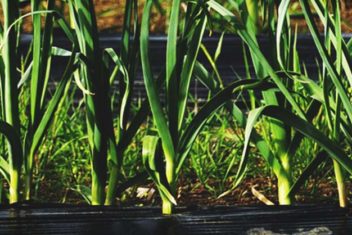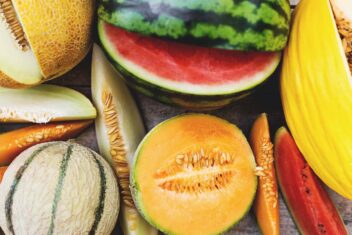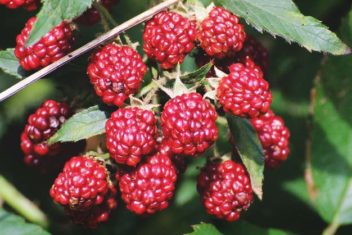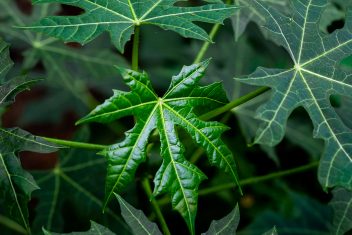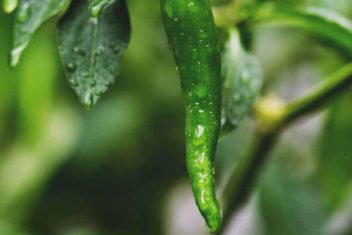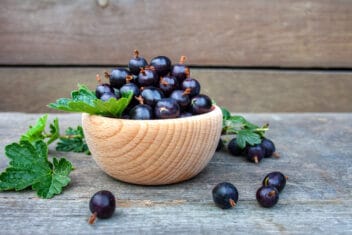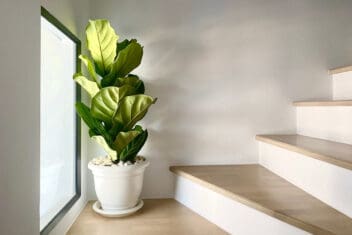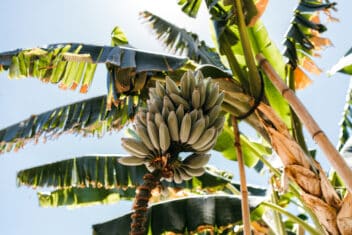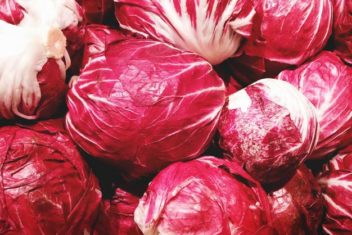Chameleon plants aren’t well known outside of Asian cuisine and medicine. If you haven’t heard of them, don’t worry, you’re not the only one. They’re wonderful, though, and more people need to start growing this incredible green.
This herbaceous perennial has a long history of medicinal and culinary uses, and you can also grow it as a ground cover or decoratively around ponds.
I grow it in my survival garden for its medicinal qualities. Interested in growing it in your space? Let’s learn more.
What is Chameleon Plant?
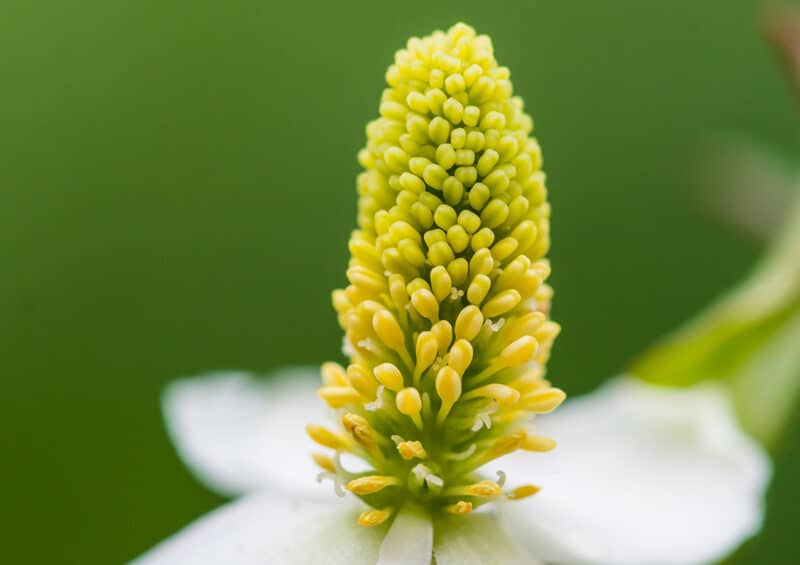
Houttuynia cordata is also known as fish mint, fish wort, rainbow plant, heartleaf, and chameleon plant. It grows about a foot tall and each plant gets about 3 feet wide, but it can reproduce and spread indefinitely.
This is a water lover, and it can grow with up to 2 inches of water over the crowns.
It has aromatic, greenish white flowers and deep green leaves, often with red edges.
Fish mint is beneficial for your health, can be used in cooking, and is an attractive pond plant or ground cover.
The bad news is, this plant can be invasive because it spreads rapidly underground via rhizomes. Container planting, or growing in areas that provide a barrier like retaining walls, is often best.
Varieties of Houttuynia Cordata
There are several varieties, but you’ll often see it simply listed by its scientific name.
Chameleon
This is probably the most common variety outside of Asia, especially in North America. There are various types of Chameleon including:
- Tri-color
- Court Jester
- Variegata
Chameleon is preferred by many gardeners because it’s not as vigorous as other varieties, which can take over a large area in a short space of time.
Flore Pleno
Flore Pleno has a lot of small, white flowers, but is similar in vigor to the standard variety. The leaves are often plain green, unlike Chameleon, which has multiple colors. The leaves have a lemony taste and the rhizomes taste a little like fish soup.
How to Grow Houttuynia Cordata
H. cordata does well in saturated soils and can tolerate sitting in water. Just remember that it can be invasive when choosing a place to plant it.
This is a hardy plant and grows well in USDA Zones 4 to 10.
Sun and Soil Requirements
This is where H. cordata is unique. It survives in full sun, where it has a bold, full flavor. But it also grows in partial or nearly full shade, where the flavor won’t be as strong. This is one of those few herbs that tolerates heavy shade.
That means that if you’re growing it as a groundcover and you aren’t worried about the flavor, it can grow just about anywhere. If you want to eat it or use it medicinally, choose a location in full to part sun.
Chameleon plants aren’t fussy when it comes to the soil they’re growing in. Unlike many plants that love water, it grows well in sandy soil, loamy soil, and clay soil.
For best results, plant in loamy soil that is mildly acidic, with a pH of 6.1 to 6.5.
The key is that the soil must be able to hold moisture.
When to Plant
Put chameleon plant in the ground any time from spring all the way to late fall. This is a hardy plant that can withstand temperatures down to -20°F, but it may go dormant when it gets that cold.
The rhizomes survive in the ground and regrow when it’s warmer.
Container Planting
I can’t stress enough how invasive this plant can be in the right conditions. The best thing to do is plant it in containers and place them around your garden.
Alternatively, treat it like mint and plant it in a container and then bury the container in the ground to try and control the rhizomes spreading. Use a good quality potting mix that is able to retain high levels of moisture.
You may still have to watch for runners that have formed by creeping along the ground and setting roots, but I’ve found that keeping the plant in pots, stops the majority of the spread.
Planting Rhizomes
By far, the easiest way to get chameleon plants growing is by planting a rhizome, because that’s how they spread naturally. If you know someone with a plant, get one from them.
You don’t need too much. A rhizome about 2 inches long will sprout a new plant.
Simply plant a section of rhizome in a small container with a good quality seed raising mix.
Keep the container in a warm location with plenty of sunlight. Water well and don’t allow the seed raising mix to dry out.
You can also dig up part of the adult plant and divide the rhizome, with some of the foliage attached. This should root and thrive with little trouble.
Planting Seed
You can buy chameleon plant seeds at many seed sellers. Mix a few seeds with sand and sprinkle over a seed raising mix in a container.
Sprinkle a light cover of seed raising mix over the top of the seeds and tamp down slightly. Mist well with water.
When the plants are big enough, transfer them to the container they will remain in, or into the ground where they can spread.
Give each plant a foot of space.
Caring for Chameleon Plants
As with most plants that can turn invasive, chameleon plant doesn’t take much encouragement to keep it growing happily.
Fertilizer
Feed with an organic fish-based liquid fertilizer every three months or so when planted in a container.
Feed with well-rotted organic matter once a year if it’s planted in the garden.
If you’ve planted fish mint on the edges of a pond with fish, and the plant sits in the water slightly, you generally don’t need to fertilize.
I’ve found that when planted on a pond edge where the water sits around the plant, it spreads much more rapidly than when planted in soil.
Water
Fish wort loves water so don’t allow the soil to dry out too much if planted in the garden. Keep the soil moist-to-wet when planted in a container.
Pruning
If you have planted in the ground, and want to limit spread, divide regularly. This is something you need to do at least twice a year.
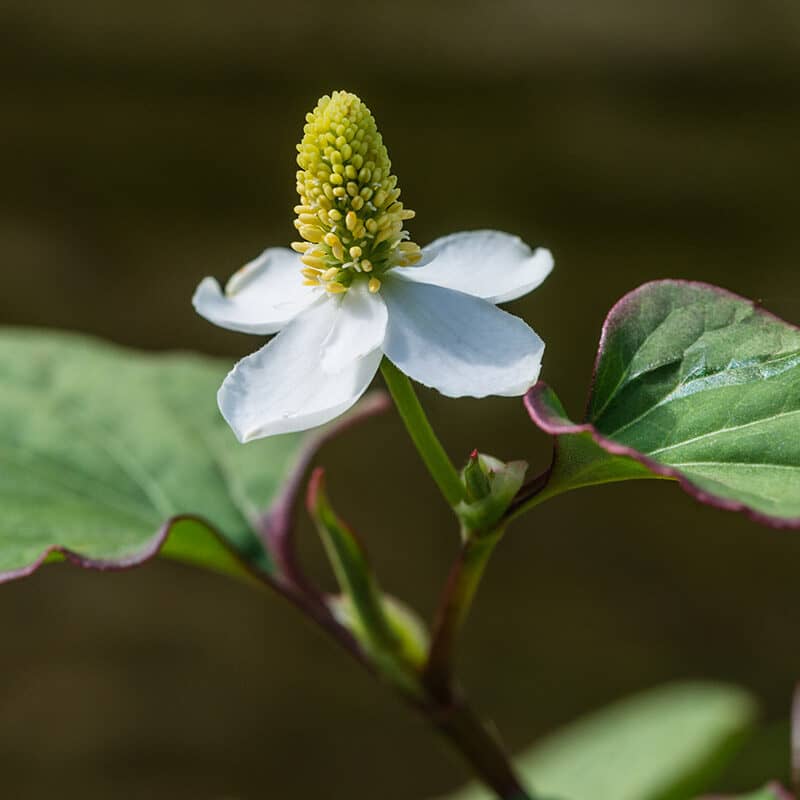
In containers, deadhead the flowers as they die off and remove any leaves that are damaged or dead.
Companion Planting for Houttuynia Cordata
Put this prolific plant on banks and areas where you don’t mind it spreading. I’ve planted the following with it:
- Comfrey
- Chamomile
- Lavender
- Mint
- Lemon Myrtle
All of these plants have a spreading nature and require plenty of space. If you have a large area and you’ve planted H. cordata, choose one or two of the above list and they will rapidly fill the space in. The bigger the area, the more diversity you can have.
Common Problems and Solutions for Growing Houttuynia Cordata
Fish mint is an extremely pest and disease resistant plant. Nothing is problem-free, however. There are a couple of problems to look out for.
Leaf Spot
This fungal disease causes unsightly spots on the leaves that can interfere with photosynthesis. Loss of vigor can occur and the edible leaves become unusable. It’s only recently that this plant has suffered from leaf spot.
- Don’t overcrowd plants to allow for good airflow.
- Water the base of plants, and avoiding splashing on the foliage as much as possible.
- Remove all garden debris as it falls and collects on the ground.
- Remove and throw away any infected leaves as soon as you see a problem. Don’t add to the compost pile. It’s best to bag it up and throw it in the garbage.
Aphids
Is there any plant aphids don’t feed on? These sap-sucking pests go for fish wort and cause damage like any other plant.
They excrete honeydew, a sweet substance loved by ants and wasps. It also causes sooty mold.
We gave an entire guide dedicated to identifying, preventing, and dealing with aphids.
Slugs
Slugs seem to love chameleon plants and dine on young leaves. They don’t cause enough damage to kill the plant, but they make it unsightly and often make the leaves unusable for cooking.
Try:
- Diatomaceous earth
- Snail and slug pellets
- Snail traps
Check out our guide for more details on how to deal with these common pests.
Harvesting Chameleon Plants
All the parts of the chameleon plant are edible and can be harvested all year round. In cold areas, the foliage will die away, but you can still harvest the rhizomes.
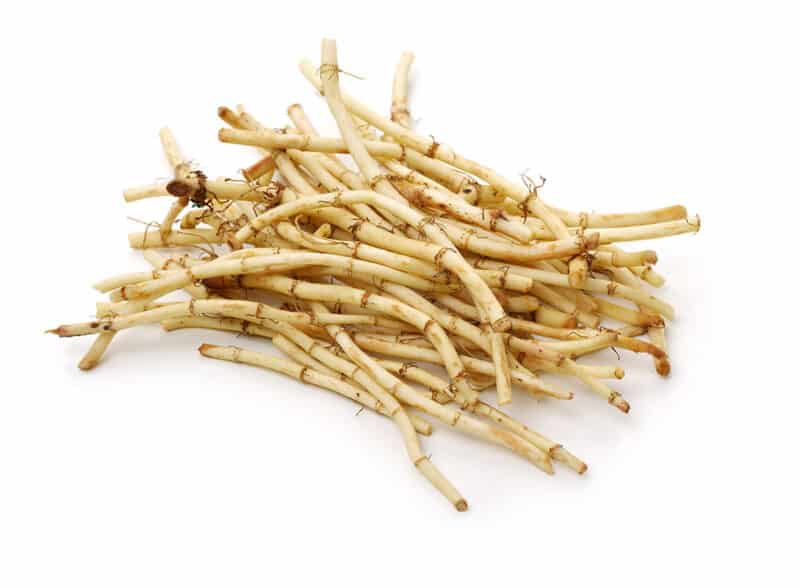
Harvest the leaves as you need them. Remember that they lose flavor if left too long.
The leaves and rhizomes can be added to soups, stews, fish dishes and stir-fries. Leaves can be dipped in batter and deep-fried, or even used in herbal tea preparations.
Medicinally chameleon plant has been used for detoxification, as an antibacterial, anti-fungal, laxative, and anti-inflammatory.
Ready to Get Growing Chameleon Plant?
Before you plant this wonderful perennial, consider the following:
- I highly recommend growing chameleon plant in containers. If it gets away in the garden, it’s hard to eliminate.
- Some people think this plant smells terrible, like off fish. To me, it smells like orange. I’ve heard it described as smelling like cilantro or lemon. If you can find a plant, crush a leaf and see what you think before you plant your own.
- This is a unique herb that is multipurpose, so really suits a survival garden or in pond areas for ground cover.
